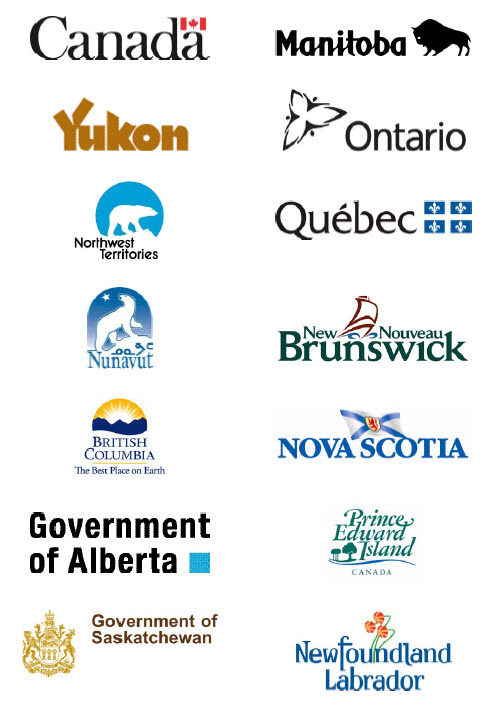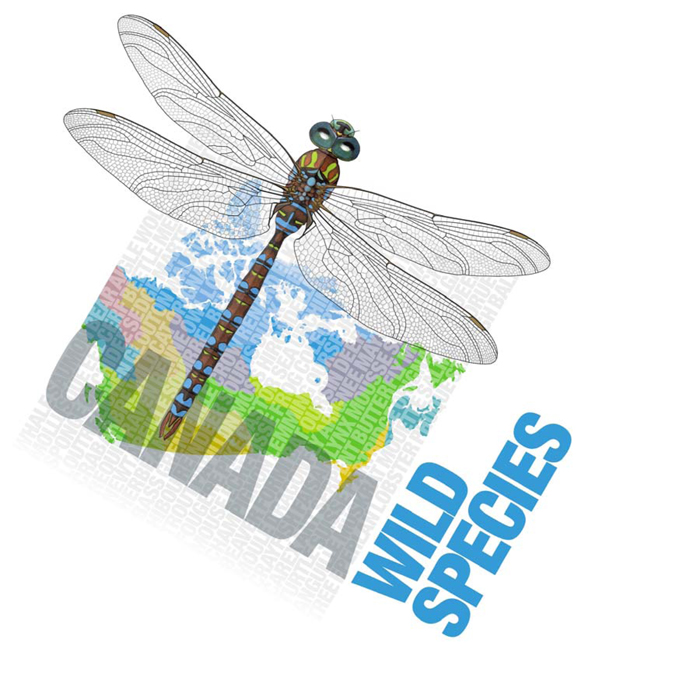Wild Species 2010
Official title: Species at Risk Public Registry - Wild Species 2010 - The General Status of Species in Canada
Abstract
- List of figures
- List of tables
- Section 1: Introduction
- Section 2: Data sources and methods
- Section 3: Results of the general status assessments
- Macrolichens
- Mosses
- Vascular plants
- Molluscs
- Spiders
- Insects: Odonates
- Insects: Predaceous diving beetles
- Insects: Ground beetles
- Insects: Lady beetles
- Insects: Bumblebees
- Insects: Black flies
- Insects: Horse flies
- Insects: Mosquitoes
- Insects: Selected macromoths
- Insects: Butterflies
- Crustaceans
- Amphibians
- Reptiles
- Birds
- Mammals
- Section 4: Conclusion
- Appendices

This report is a product from the collaboration of all provincial and territorial governments in Canada, and of the federal government.


Database of the report: Wild Species 2010 Data (4.5 Mb)
Canadian Endangered Species Conservation Council (CESCC). 2011. Wild Species 2010: The General Status of Species in Canada. National General Status Working Group: 302 pp.
Available in French under title: Espèces sauvages 2010: La situation générale des espèces au Canada.
Abstract
Wild Species 2010 is the third report of the series after 2000 and 2005. The aim of the Wild Species series is to provide an overview on which species occur in Canada, in which provinces, territories or ocean regions they occur, and what is their status. Each species assessed in this report received a rank among the following categories: Extinct (0.2), Extirpated (0.1), At Risk (1), May Be At Risk (2), Sensitive (3), Secure (4), Undetermined (5), Not Assessed (6), Exotic (7) or Accidental (8). In the 2010 report, 11 950 species were assessed. Many taxonomic groups that were first assessed in the previous Wild Species reports were reassessed, such as vascular plants, freshwater mussels, odonates, butterflies, crayfishes, amphibians, reptiles, birds and mammals. Other taxonomic groups are assessed for the first time in the Wild Species 2010 report, namely lichens, mosses, spiders, predaceous diving beetles, ground beetles (including the reassessment of tiger beetles), lady beetles, bumblebees, black flies, horse flies, mosquitoes, and some selected macromoths.
The overall results of this report show that the majority of Canada’s wild species are ranked Secure. In fact, when excluding species ranked as Extinct, Extirpated, Undetermined, Not Assessed, Exotic or Accidental, a total of 77% have a Canada General Status Rank (Canada rank) of Secure. This number varies considerably among taxonomic groups. The species groups that have the lowest proportion of species ranked as Secure were the reptiles (33%) and freshwater mussels (39%). At the opposite, ground beetles (88%), bumblebees (94%), mosquitoes (95%) and predaceous diving beetles (98%) were the taxonomic groups that had the highest proportion of species ranked as Secure. However, the high percentages of species ranked as Secure in these taxonomic groups might reflect our lack of knowledge on these species, since they were also among the taxonomic groups with the highest proportion of species ranked as Undetermined or Not Assessed.
One of the important achievements of this report is to update the status assessments of taxonomic groups that were included in previous Wild Species reports. Among the taxonomic groups that were reassessed in this report, 626 species had a change in their Canada rank. In total, 15% of the changes involved species moving into a rank with an increased level of risk, 27% involved species moving into a rank with a reduced level of risk, and 16% involved species moving into or out of the Undetermined, Not Assessed, Exotic or Accidental ranks. Updates have also resulted in the addition of 162 new species to the national list (26% of the changes) and 101 species have been removed from the national list (16% of changes). Most of these changes were due to improved knowledge of the species, but taxonomic changes, biological changes, and changes due to new detailed assessments from the Committee on the Status of Endangered Wildlife in Canada (COSEWIC) also accounted for an important part of the reasons of the changes.
The report Wild Species 2010 also serves as a first warning on possible conservation concerns for some species that have not been looked in details previously. The species that are ranked as May Be At Risk by the National General Status Working Group (NGSWG) are species that could be candidates for more detailed assessments. A total of 806 species were ranked as May Be At Risk. These species could be prioritized by COSEWIC for more detailed status assessments. The taxonomic groups that had the most species ranked as May Be At Risk were the vascular plants (444 species), followed by lichens (100 species), mosses (71 species) and spiders (62 species).
One of the issues highlighted in this report is the large number of non-native species in Canada. Of the 11 950 species assessed in this report, 1426 species are ranked Exotic at the national level, meaning that these species are not native to Canada, but were introduced by humans. Of the groups covered in this report, the vascular plants have the highest proportion of Exotic species (24%). Exotic species have been brought to Canada, both deliberately and accidentally, from around the world, and can have a number of damaging impacts on native species, including competing for space and resources, preying on native wildlife, breeding with native species and introducing novel diseases and parasites.
Finally, one purpose of this report also is to encourage more information to be collected on species currently ranked as Undetermined or Not Assessed. In this report, a total of 1618 species had these ranks because of a lack of knowledge. It is hoped that the Wild Species series will continue to raise the profile of existing data gaps and stimulate people either to contribute data for these species, or to collect new data to address these shortfalls. Without information on the status of these species, it is difficult to judge how the human uses affect the ecosystems and species. The taxonomic groups that had the highest number of species ranked as Undetermined or Not Assessed were the spiders (477 species), the ground beetles (260 species), the mosses (235 species) and the lichens (218 species).
This report represents a huge achievement by summarizing the general status assessments of a large number and variety of wild species occurring in Canada. However, with a total number of species in Canada estimated to be more than 70 000, there are still many species left to be assessed. In the future, the Wild Species series will continue to consolidate our knowledge of wild species by using information from experts to create a baseline for comparison of the status of Canada’s species.